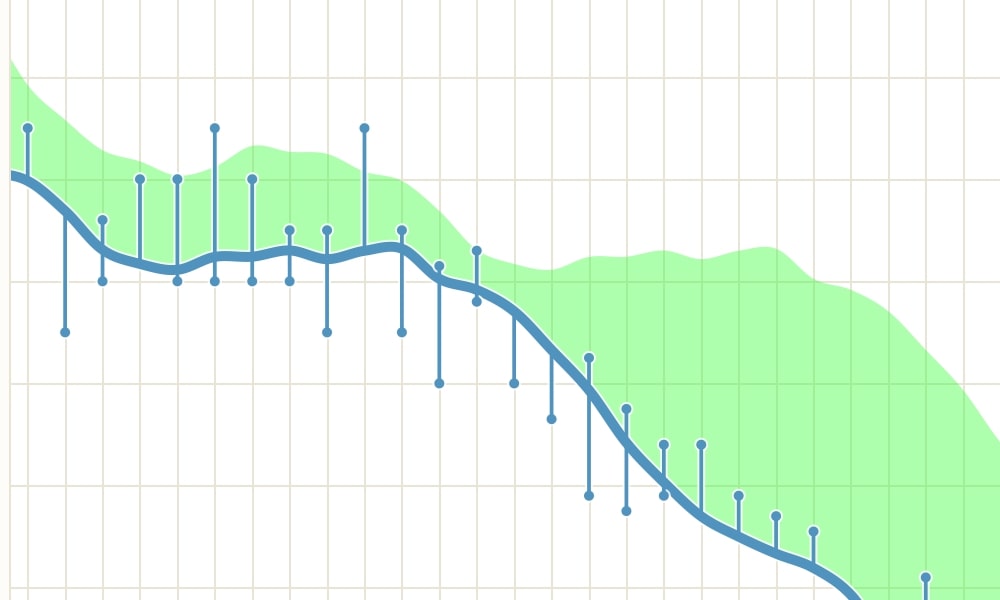Let’s be clear: assessing clients as an online personal trainer without being physically present is absolutely possible, most of the time.
One primary example where proper assessment protocols (and training in general) is near-impossible to do online is within a rehabilitative environment. While there are some trainers who do this, I don’t recommend it. There are simply too many nuances, day-to-day changes, and consistent testing that are required.
High-performance athletes are another tricky bunch when it comes to online training. Again, there are exceptions to the rule. Alex Viada of Complete Human Performance, for example, uses online methods to train high-performing clients to win. When he told me about his team’s assessment protocols, he blew my mind.
All of this is to say, online assessments are possible. They’re just really, really difficult. In fact, here’s a video outlining what you need to consider:
What follows now is a thorough analysis of the mindset, tools, and systems to assess and measure online clientele. Please note that this article is a slightly revised excerpt from The PTDC’s Online Trainer Academy textbook, Fundamentals of Online Training. Upon graduating the Academy (and passing the online test), you will achieve the Online Trainer Certification (OTC).
The Goal of Online Client Assessments
The primary purpose of any online training assessment is to establish a starting point. That’s secondary to identifying any movement limitations or injuries, because in those cases, you may refer the client to a local trainer or rehab facility.
The validity of the actual number you get is not all that important. Take fat loss, for example. You just don’t know if the body fat percentage that results from a test is actually your client’s body fat. Unless your client has access to a BodPod, underwater weighing, or a DEXA machine, the number that they get as a result of any kind of bioelectrical impedance machine, calculation based off of tape measure, or similar method won’t be an accurate measurement of body fat.
The test-to-test reliability of the data is what matters. With your assessments, aim to establish a baseline against which you can measure progress. What’s more important is that the same method is used each time within similar circumstances so that results can be reliably compared. From there, provide the client with assessments that they can perform and report at consistent intervals, with reliable results.
When to assess online training clients
When and how often should I assess my online clients?
It depends. (I know, don’t you love that answer?)
Perhaps the best thing about online training is that it presents an opportunity to allow fitness to dictate business.
You don’t have to arbitrarily assess your clients because those are “the rules.” You’re the boss here: you choose the schedule based on your clients’ needs and the program you’ve built. For a movement screen, your assessment might be be bi-weekly; for weight loss, it might be monthly. You go with what you think is best.
That said, consider the following guidelines:
- Communicate that the assessment is just a baseline. Tell your client that what they were told before is irrelevant (and likely inaccurate if it had to do with body fat). What matters are their results moving forward, not looking back; so you’ll take a baseline measurement as a point of comparison as they progress.
- Discourage daily monitoring. No matter what you do, many clients will want to monitor their weight. Even with a positive weight loss (or gain) trend, daily fluctuations can be torturous. If a client does insist on daily monitoring (or you know they are doing it), get them to download an app called Happy Scale. This app allows them to report daily weight, but plots it on a long-term curve with color coordination to hide the daily changes, allowing them to see the big picture.
An example of the Happy Scale App. Notice that the daily fluctuations are present, but overall trend is clear (in addition to the positive green color).
- Establish regular reporting intervals. Decide in advance when you want your client to perform self-assessments. If using Trainerize software, you can schedule a reminder for your clients to take their assessments. If not using software, set a calendar alert to email your client a reminder to assess and report back.
- Include your assessments as part of your service presentation and pricing. Performing assessments over Skype that require you to be watching or cueing should be considered a “primary” support method and taken into account when putting together your packages. For example, if clients desire or need bi-weekly movement assessments over Skype, that’s a big commitment. It’s something you might include in your high-end, premium offering, for example.
Assessment options
The following are some of most common assessments included in online training programs. Keep in mind that different types of clients will need different assessments, so you’ll likely want a few options in your arsenal. And if you have a different method that is working for you–great. Keep using it.
Body Fat
This is the most common type of assessment. We all know that body fat is a better measure than weight is. Unfortunately, it’s also more difficult, since at-home body fat measurement devices are a minefield.
The ideal methods for your clients to measure body fat are expensive and hard to come by. If they live in a major city, they might be able to find a facility that offers a BodPod or DEXA machine, but that will cost them money and a special appointment.
The most common type of low-cost body-fat assessment is bioelectrical impedance, but the accuracy of these tools is questionable. These tools come in all shapes and sizes, but they work basically the same in that they measure the opposition to the flow of an electrical current that moves through the body.
If you must use an at-home body fat assessment tool, Skulpt is a good option. As opposed to measuring body fat across the entire body, this machine can be placed on a body part and then reports the composition of that specific body part. Skulpt is still based on impedance, but is considerably more accurate than conventional body fat scales.
The machine is connected via smartphone to an app, which then creates a visual representation of the data and charts it. The handheld tool costs $99 and can be ordered online anywhere in Canada, US, UK, and Australia, or purchased in Best Buy stores across the United States. You could include this as a gift in your high-priced program or advise your client to invest in one.
A final method for estimating body fat that is reasonably reliable from test to test is an online body fat calculator. The tried-and-tested calculator is on Dave Draper’s website. The website is preloaded with all calculations. You will need to instruct your client to provide you with some information, such as height, weight, and a few measurements. You can then plug the information into the calculator and get a result.
Body weight
Measuring weight is simple: just get your client to step on a scale. Your biggest problem won’t be getting clients on the scale; it’s getting them off it. Clients tend to care too much about what the scale says and weigh themselves far too often. Like many trainers, I don’t like to use body weight as a metric, but it’s so culturally ingrained and so easy to track that you won’t be able to avoid it. I suggest advising your clients to only step on a scale bi-weekly.
If your client doesn’t take your advice (and many won’t), encourage them to download the free Happy Scale App and enter their information in there. The reality is that you can try to convince them that body weight fluctuates and they need to look at the overall trend, but nothing you say will be as effective as actually seeing it.
This app makes life a little bit easier for you. They will be able to see the trend over time. They get a quick “green” if things are going well and “red” if they aren’t.
In terms of what you should care about from a progress standpoint, tracking weight once a month to note improvements and setting new goals are good general rules. As you likely know, a larger weight loss in an absolute sense tends to occur early in the program, with smaller changes happening later as the client progresses.
Progress pictures
Getting a client to submit progress pictures is great because it helps them see the changes. If you get the appropriate permissions, their photos can also be a great marketing tool.
Before getting started, ask your clients to sign-off on a release form that grants you permission to use their photos. If you intend to use their pictures for marketing, you’ll need to have an explicit section of the form stating that you can use the photos in perpetuity for marketing and promotion purposes. Respecting privacy laws is something many online trainers fail to consider and is arguably just as, if not more, important. We cover legality and liability extensively in The PTDC Academy as well. Make sure the client understands that you won’t use the photos without their permission.
Ideally, progress photos are taken in the same room with the same light and the same poses. These are not the transformation poses you see used to promote magical weight loss or muscle gain supplements. They are simply an opportunity to compare and contrast their physical changes.
Here are some instructions to give to your clients to help them take great photos:
- Have someone take the picture for you, or set up your camera to take the photo hands free
(i.e. no selfies). - Photos should be taken with a relaxed stance.
- Lighting, clothing, and location should be consistent.
Take 3 photos:
- Front
- Side
- Back
Set alerts in your calendar to remind your client for progress photos, either bi-weekly or monthly is usually a good bet. Or, if you’re using Trainerize software, your client can take a photo with their phone and upload directly into their account.
This article originally appeared on The PTDC. It has been reposted with permission.


